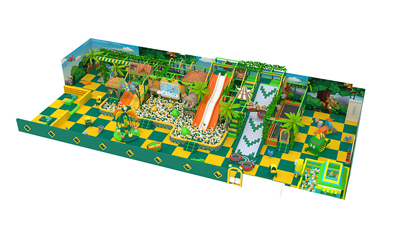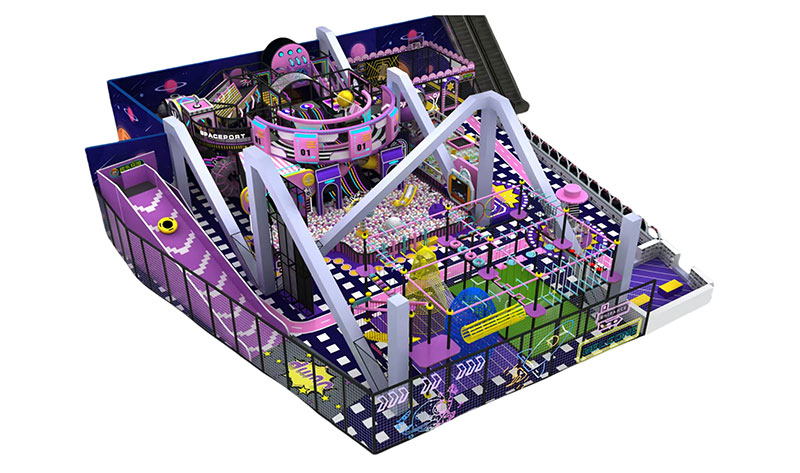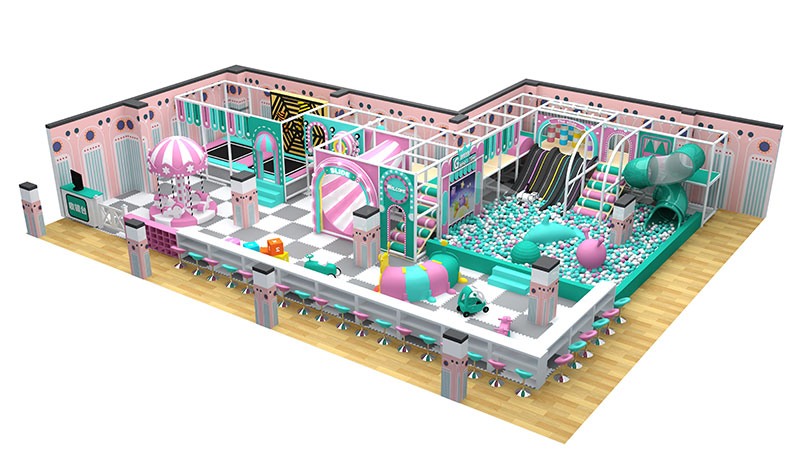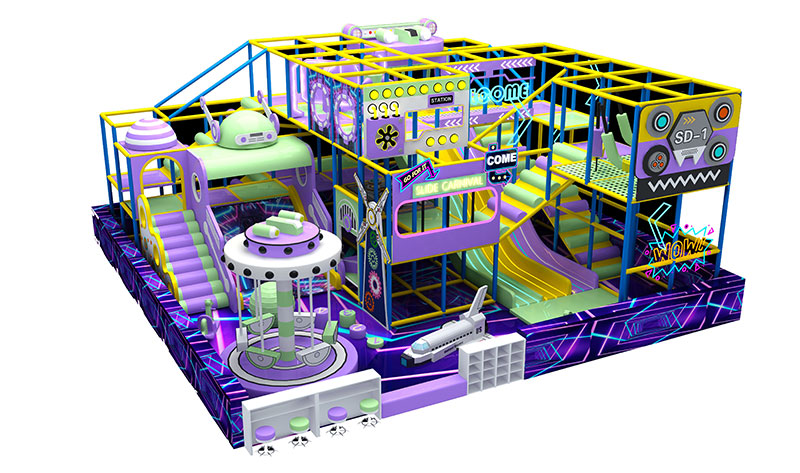Thinking of starting an indoor trampoline park or installing one at home? Whether for a business venture or personal fun, getting the size and height right is the most critical step. It's not just about the bounce; it's about safety, capacity, and overall user experience.
This guide breaks down the recommended dimensions for both commercial parks and home setups in a clear, easy-to-understand way.
Part 1: For Commercial Indoor Trampoline Parks
For a business, size and scale directly impact profitability, customer flow, and the variety of attractions you can offer.
1. Total Park Area: How Much Space Do You Need?
There's no one-size-fits-all answer, as it depends on your business model and target market.
- Small-Scale Park (Starter/Boutique): Approximately 5,000 - 10,000 square feet (465 - 930 square meters). This size can fit a main jump arena, a basic foam pit, and a small kids' zone. It's suitable for a niche market or a community-focused center.
- Medium-Scale Park (Industry Standard): Ranging from **15,000 - 30,000 square feet (1,400 - 2,800 square meters)**. This is the most common size. It allows for a diverse mix of attractions like a main court, dodgeball courts, basketball slam dunk lanes, large foam pits, and ninja warrior courses, appealing to a broad audience.
- Large-Scale Park (Entertainment Destination): Over 40,000 square feet (3,700 square meters). These are major entertainment hubs that may include climbing walls, zip lines, extensive party rooms, and a full-service café, providing an all-in-one experience.
Key Consideration: Allocate about 30-40% of your total area to non-jumping spaces such as reception, seating, lockers, and walkways.
2. Ceiling Height: The Non-Negotiable Safety Factor
Ceiling height, or clearance, is the most crucial safety specification. It is the minimum distance from the trampoline bed to any overhead obstacle (lights, beams, ducts).
- Absolute Minimum Requirement:14 feet (4.3 meters). Anything less is unsafe and will likely fail safety inspections.
- Recommended Safe Height:17 to 25 feet (5.2 to 7.6 meters). This is the industry gold standard.
- 17-20 feet (5.2-6.1m): Suitable for general open jump areas and most interactive games.
- 20-25 feet (6.1-7.6m) and above: Essential for high-performance areas (like Olympic-style trampolines), large foam pits, and features involving jumps from platforms. This provides a critical safety buffer for advanced maneuvers.
Planning Tip: Always consult with professional park designers and safety experts. They will ensure every section, especially landing zones, meets or exceeds the minimum height requirements.
Part 2: For Home Indoor Trampolines (Fitness & Recreation)
Bringing a trampoline indoors for home use requires a careful balance between fun and spatial constraints.
1. Trampoline Size: Fitting into Your Space
The size you choose depends entirely on available room and purpose.
- Small Round/Rebounders (Fitness): Diameter of 3 - 4.5 feet (0.9 - 1.4 meters). Perfect for individual aerobic workout or physical therapy in a living room or home gym.
- Medium Round (Kids' Play): Diameter of 6 - 8 feet (1.8 - 2.4 meters). This is the most popular size for family use, safely accommodating 1-2 children at a time.
- Large Rectangular (Advanced Users): Can be up to 10 x 17 feet (3 x 5.2 meters). Designed for experienced teens or adults to practice tricks, but demands a very large dedicated space.
Pro Tip: When measuring, ensure a safety perimeter of at least 3-4 feet (0.9-1.2 meters) of clear space around all sides of the trampoline to prevent collisions with walls.
2. Indoor Ceiling Height: Your "Safety Ceiling."
Ceiling height is often the biggest limiting factor in a home environment.
- Minimum Safe Clearance: A minimum of 6 feet (1.8 meters) of clearance from the mat to the ceiling is required for very low, conservative bouncing.
- Recommended Comfortable Height:8 - 10 feet (2.4 - 3 meters) or more is ideal. Standard residential ceilings are 8-9 feet, which significantly limits jump height in a normal room.
- The Perfect Scenario: The best locations for a home indoor trampoline are spaces with vaulted ceilings, a finished basement, a tall garage, or a spacious attic, as they easily provide the recommended clearance.
Critical Reminder:Never use a trampoline in a room with a ceiling fan or low-hanging light fixture.Always account for the jumper's full reach above their head.
Conclusion: The Golden Rules of Size and Height
Following these fundamental principles will ensure a safe and enjoyable Trampoline experience, whether for business or home:
1. Safety First: Never sacrifice ceiling height, as it is your main protection against serious head and neck injuries.
2. Purpose Guides Size: Clearly identify who will use the space—professional athletes, families, or young children—and let that determine your size choices.
3. Follow Standards: Commercial facilities must comply with local building codes and industry safety standards (like ASTM). Home users should strictly follow the manufacturer's safety instructions.
4. Seek Expert Advice: For a commercial park, hiring a professional design firm is crucial. For a home setup, when unsure, consult with the trampoline supplier or an installer.
A well-planned trampoline area is a sustainable source of joy and fitness. Before the first bounce happens, make sure you've built it on a foundation of smart dimensions and unwavering safety.












